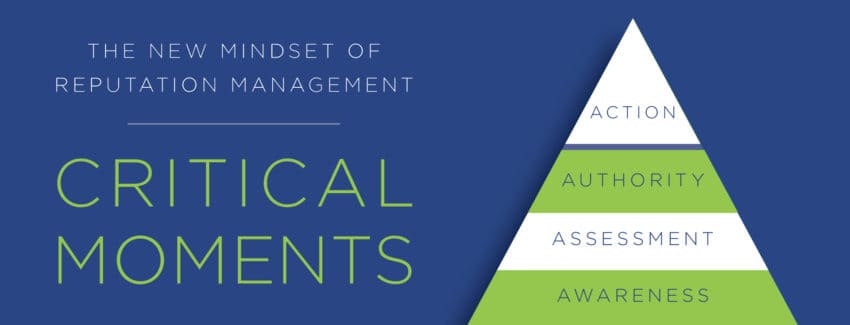What is a crisis?
It’s a big question, but in its most basic terms, it’s something that interrupts you from a pre-planned activity — it moves you off-course, in other words — and it triggers a negative reaction from some important subset, be that employees, stakeholders, investors, the media etc.
The perception of your actions has now been misaligned with stakeholder desires — and remember, employees are major stakeholders too.
What’s impacted:
- Operations
- Financial stability
- Credibility
- Reputation
Critical moments — how you respond — are different from a crisis. A crisis can be momentary; the obvious example is a bad post on social media. You get back to normal quicker than we think.
Critical moments are core issues that long-term impact how your organization is viewed.
Think about the recent Starbucks example from Philadelphia.
That was a crisis, yes.
The “critical moment” from that is how Starbucks more broadly addresses race and customer service/experience.
See the difference? The crisis is the initial catalyzer, often; the critical moment is the longer-term strategic response.
So what’s the vocabulary around this?Vocabulary is crucial to work. Think about marketers. Remember the 4Ps?
- Price
- Product
- Place
- Promotion
I wanted to see if there was a vocabulary approach that could be applied to reputation management, and over time, I netted out in my book at this:
- Awareness: Who are you? What do you stand for?
- Assessment: What do others think of you? How do you measure it?
- Authority: Have you gone through a risk framework and are the top levels of your company bought in?
- Action: Once you’ve gone through everything below, it’s time to get to work. This is the top level. (See visual in a second.)
Visually:
Knowing this, what can you do now?
You need to develop a better understanding of risk. That’s actually where the “authority” piece above comes from.
There are three categories of risk, based on our work with clients over the years (and external research):

“Strategic” are risks you undertook — and knew they were risks — but there was a perception of end benefit.
“Preventable” are the risks you should have zero tolerance for. Avoid or prevent them. Rules/compliance are created to prevent these risks.
“External” are not controllable. Think about weather, natural disasters, etc.
Understanding the categories of risk allows your C-Suite and others to be aligned on how to grow reputation. Strategic risks are really misunderstood by the public, and oftentimes the corresponding corporate response is “Apologize.” In fact, the reality should be “Explain it better to the public.”
This building of reputation over time all ties to the seven levels we’ve been discussing for years, visually seen here:

These seven levers represent the elements of you corporate life you can control. We will be planning other webinars on the details and depth of the levers.
Hope you enjoy this month’s webinar and let us know if you have any questions about these concepts or overall reputation management.



